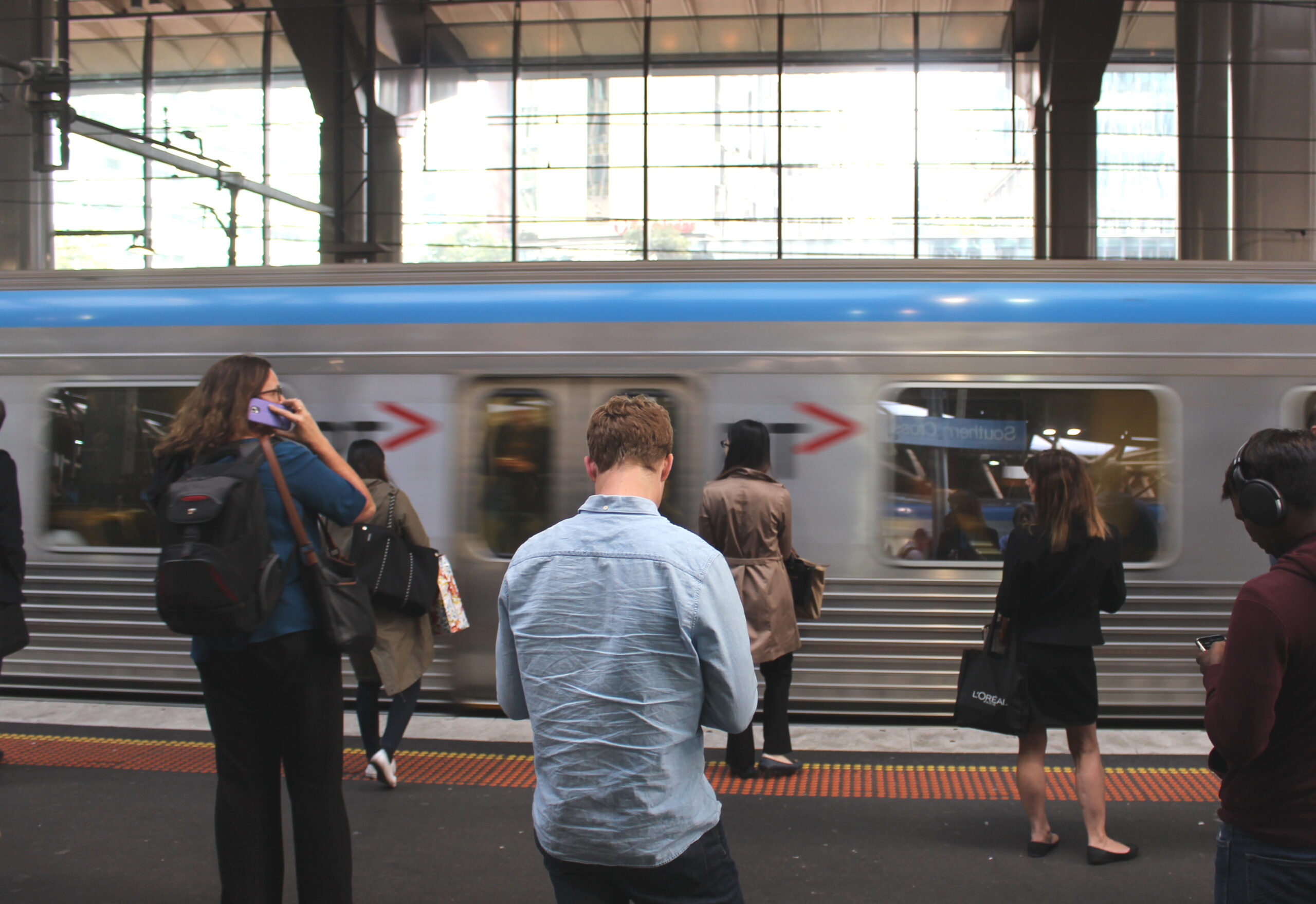The following media releases from 1998 to 2005 have been archived.
09/11/2005: Road Bureaucracy Outdated and Unsustainable
08/11/2005: Failed Freeway Fetish slammed
07/11/2005: Government Must Focus on Public Transport to Save Melbourne 2030
27/10/2005: Traffic Priority A Must For Buses
19/10/2005: Call for train boost
30/08/2005: Freeway Tunnel Proposal an Expensive Waste
15/08/2005: “Backwards” public transport system failing to ease oil price pain
07/06/2005: Equal tax treatment for public transport can break urban gridlock
30/05/2005: New Customer Charters Highlight Transport Neglect
23/05/2005: Public Funeral 23rd May 2005 12:30PM – Corner Russell and Collins Streets, Melbourne
19/05/2005: City Mourns Ttam Stop, Demands a Resurrection
13/05/2005: Road Lobby Myths Busted – Transport Advocates Launch New Online Information Resource
03/05/2005: 2005-06 State Budget under-delivers on Public Transport
02/05/2005: Access For All on Melbourne’s Tram Network
28/04/2005: Fast Rail Disappointment – Users Call for More Trains
11/04/2005: Tram Stop Decision Imminent – Alternative Proposal to be Considered by Council
08/04/2005: Road Engineers Support Plan To Close Tram Stops
07/04/2005: Record oil prices highlight need to boost public transport
14/03/2005: Upcoming Budget Must Be The Budget For Public Transport
25/01/2005: Poor Transport Planning Means Delahunty Ditched
10/01/2005: Construction Starts on Carlton’s ‘Urban Design Catastrophe’ – Efforts to get proper process failed, say community group
01/01/2005: Users Hail New Years Transport Success
28/12/2004:Users Praise New Year’s Eve Transport
21/12/2004:Show us the timetables! – User Groups Call for Fast Rail Timetable Release – Geelong Branch
16/11/2004:Council urged to undertake feasibility study
05/11/2004:PTUA Optimistic About Transport Policy Change in Yarra – User Group Issues Scorecard on Yarra Candidates
02/11/2004:PTUA Announces Maroondah and Yarra Ranges Local Area Committee
12/09/2004:Public Transport Forum an overwhelming success
02/09/2004:Latham’s $420 Million Promise Welcomed – Use Money to Fix Outer East Public Transport: Community Group
23/08/2004:Road Plans Slammed – A Freeway Agenda an Outrage: Residents
23/08/2004:No Shops Without Service – An expanded Chadstone needs expanded public transport
21/08/2004:Doncaster Hill will dismay without public transport
05/08/2004:Public Transport: Governments must get ‘on board’
21/05/2004:AusLink Road Bonanza Slammed – Community group condemns 86%-14% funding imbalance
21/05/2004:Better Services Needed to Counter Falling Patronage – Geelong Branch
06/05/2004:State Budget Slammed
08/04/2004:Higher Density: Not the miracle cure for sickly public transport
16/02/2004:Time to ‘Sober Up’ on Ring Road – Geelong Branch
13/01/2004:Public Transport: Abysmal in Casey
08/01/2004:Public Transport: Abysmal in Knox
08/01/2004:Public Transport: Abysmal in Maroondah
28/12/2003:NYE Transport Totally Inadequate
16/12/2003:Build Station Right the First Time – Geelong Branch
14/12/2003:Geelong Tickets to include Metro travel – Geelong Branch
14/11/2003:G21 and Sustainable Transport – One Step Forward, Two Back – Geelong Branch
31/10/2003:Public Condemn Melbourne Central Exit Closure
17/10/2003:Melbourne Central Closure Study Flawed, Say Users
12/10/2003:Developer greed sabotages transport interchange – Government asleep at wheel
12/09/2003:All Change at PTUA HQ
27/08/2003:Train staff would not be expensive, say users
09/06/2003:Passengers welcome uniform signage
27/05/2003:Tram Jam Plan Slammed – Trains the only solution for Doncaster
19/05/2003:Melbourne’s Bus Plan – Goodbye to the Weakest Link?
18/05/2003:Long March between Buses – Geelong Branch
05/05/2003:State Government can’t be bothered with Geelong Fare Reform – Geelong Branch
15/04/2003:Give back our seats – More trams, not fewer seats, to fix crowding
14/04/2003:Still No Solutions for the Outer East – Anger Greets Tollway Announcement while Public Transport Rots
03/04/2003:Users Call for Geelong Fare Reform – Geelong Branch
16/12/2002:Trains and trams, not taxis – A taxi surcharge is not the solution, say users
13/12/2002:Batchelor’s Christmas Present For Public Transport: Higher fares, slashed services
02/12/2002:Freeway Building the Ultimate Vote Loser
21/11/2002:Greens better than Libs better than Labor for Geelong Public Transport Commitments – Geelong Branch
21/11/2002:Two Years and Five Months after the Bus Tour, Still No Improvements to Geelong Bus Frequency – Geelong Branch
14/11/2002:Labor’s cut-price station plan flawed – Appalling service levels, future upgrades restricted and no ticket office – Geelong Branch
07/11/2002:Where are the humans? – Unstaffed stations dangerous, say users
29/10/2002:It’s Time to Move – A New Vision for Public Transport
29/10/2002:Fast Rail Frustration – Still no commitments on train frequency, fare integration or bus connections to stations – Geelong Branch
17/10/2002:Show us the research! – Bracks Government neither open nor accountable, say users
17/10/2002:Bus system “an embarrassment to the region” – Users call for frequent buses and reliable connections to trains – Geelong Branch
11/10/2002:PTUA slams Batchelor’s $400 million ring road recommendation – $ 3/4 Billion for Geelong freeways but Labor won’t lift a finger on local buses – Geelong Branch
10/10/2002:Public Transport an Election Issue for Geelong – Users call for frequent trains, integrated fares and an end to overcrowding – Geelong Branch
02/10/2002:Cancel Freeway Now – Public Transport the cheaper option
01/10/2002:PTUA welcomes Liberals’ pledge to build Grovedale Station – And calls for frequent trains and bus connections – Geelong Branch
20/09/2002:Infrastructure report confused – More Engineers toys not the solution
05/09/2002:PTUA calls for action on train overcrowding – Geelong Branch
21/08/2002:Stamp Out Re-Validation
08/08/2002:Time for the minister to take control
07/08/2002:Tram Attendants: Time to Revisit
30/07/2002:Passengers welcome Public Transport Ombudsman
25/07/2002:Monty Python Bureaucracy Closes Railway Station
24/07/2002:Rights Blitz! – PTUA and CLCV
04/07/2002:Call for Fare System Simplification – Scrap Single-Mode Tickets, say Users
25/06/2002:Geelong line upgrade welcomed – But users still await a commitment on frequency – Geelong Branch
19/06/2002:Call for Public Enquiry on Rail Safety – Train Crashes Could Herald Disaster
13/06/2002:Guarded Support for Skybus Boost – Fare Integration Overdue, Say Users
26/05/2002:City to Vote on Flawed Transport Strategy – Geelong Branch
22/05/2002:Public Transport Group Applauds National Transport Plan – A Victory for Common Sense, says PTUA
07/05/2002:Budget 2002 still fundamentally unbalanced – Lavish road spending at the expense of public transport
24/04/2002:Melbourne lags on late-night transport – A 24-hour city needs 24-hour service
21/03/2002:Geelong Fast Rail: A Lost Opportunity for Service Improvements – Geelong Branch
18/03/2002:City’s ring road obsession may lead to toll road folly – Geelong Branch
07/03/2002:Yarra Council Candidates Scored on Sustainable Transport
20/02/2002:PTUA Calls for New Approach on Inner South West Traffic – Geelong Branch
13/02/2002:Traffic Chokes City of Yarra
28/01/2002:Geelong’s Public Transport fails Australia Day Revellers – Geelong Branch
24/01/2002:Airport Rail: Time for a Re-Think
07/01/2002:Midday Craigieburn Services Saved – Give Outer Suburbs Regular Service, Say Users
24/12/2001:Christmas Present for Public Transport Users: Higher Fares, No Service
17/12/2001:New Ticketing Disaster Feared: Government Taskforce Re-Inventing the Wheel, Say Travellers
06/12/2001:Private Train, Tram Operators’ Financial Problems ‘A Unique Opportunity’ – PTUA
03/12/2001:Sunday Train Services Slashed – Minister Must Protect Public Interest
01/11/2001:Half-full pork barrel does nothing for Labor’s chances
31/10/2001:Batchelor Blows His Budget – Scoresby Splurge Leaves No Money For Pakenham Bypass
26/10/2001:Scoresby Freeway Court Challenge Issued
10/10/2001:NSW Bypassed as Howard Funds $billion Melbourne Freeway
24/09/2001:Bracks government drops Rowville/Monash rail line
19/09/2001:Timetable Booklets Restored! – Geelong Branch
11/09/2001:Threat to Trams is Serious, Warn Users
07/09/2001:Train Users Fear Betrayal on Fast Train Ticket Prices-Geelong Branch
04/09/2001:Bus service improvements scrapped
28/08/2001:Graffiti painted over- But what about station staff? – Geelong Branch
24/08/2001:PTUA Calls for Independent Review of Ring Road Study – Geelong Branch
23/08/2001:Politicians urged to come clean on Scoresby tolls
07/08/2001:Tram Stops Under Threat: New SuperStops designed without passengers in mind
25/07/2001:Train Services Slashed – Regulator Must Do His Job or Go, Say Users
29/05/2001:‘Public Transport First’ for Aston
14/05/2001:Threat to Pacific Highway Funding
13/05/2001:Anger Greets Scoresby Toll-Road Announcement
11/05/2001:Return of Country Trains Welcomed
03/05/2001:Public Transport Group Welcomes Government Study But Wants To KnowMore
26/04/2001:Batchelor Needs a Bex and a Good Lie Down
20/04/2001:PTUA eagerly awaiting consultation on the Fast Train Projects – GeelongBranch
09/04/2001:Eastern Freeway commuters to suffer: Scoresby will increase roadcongestion
28/02/2001:The PTUA calls for a “fair go” on buses – Geelong Branch
27/02/2001:Silence on Important Transport Question – Geelong Branch
18/02/2001:Bring Back the Booklet – Geelong Branch
14/02/2001:Batchelor Accused Of Lying About Road Funding
12/02/2001:No sign of promised public transport upgrade
12/02/2001:Road Funding: Public Transport Users Condemn Road Lobby ‘Lies’
12/02/2001:Traffic Figures Show City Link Has Failed
18/01/2001:Thousands call for Public Transport First
11/01/2001:Federal Funding for Scoresby: Wishful Thinking
05/01/2001:Return of Discounted Fares Applauded
22/12/2000:Batchelor’s Christmas Present for Public Transport Users: Higher Fares, NoService
21/12/2000:Free Christmas travel “gimmick” obscures lack of service
04/12/2000:Tram Services Slashed
29/10/2000:Freeways Dominating Transport Planning, says Expert
04/10/2000:Another Backflip from Batchelor: Freeway through Yarra Valley back onagenda
29/09/2000:Hopes Rise for Well Planned Regional Fast Rail
20/09/2000:Bendigo Fast Rail, Great Expectations or Second Rate System
18/09/2000:Sprinter Service for Maryborough
11/09/2000:More Work Needed on Geelong’s Fast Trains
05/09/2000:Country Rail Reform to Proceed
22/08/2000:Release of Fast Train Reports Stalled by Bureaucracy
17/08/2000:Concern Grows Over Fast Train Links
07/08/2000:Scoresby Freeway “A Billion-Dollar Broken Promise”
26/07/2000:Commuters Angry Over Train Staff ‘Scam’
27/06/2000:Transport Plan Labelled ‘A Disgrace’
11/06/2000:Where are the Fast Train Reports?
10/05/2000:Fast Train Too Slow For Benalla
12/04/2000:High Frequency, Fast Trains “Easily Achieved” Says PTUA
11/04/2000:Talks Continue on Passenger Rail
28/03/2000:Maryborough to Ballarat Rail Link
27/07/1999:Outer East Transport Assessment Kept Secret
14/06/1999:Tram Users Demand Swanston Walk Improves
09/12/1998:Scoresby Freeway a Disaster for Green Belts
30/11/1998:Scoresby Freeway threatens Nillumbik Green Wedge – EPA
26/11/1998:Public Transport Top Proirity for Knox – Blaze
18/11/1998:Rail $100 million or Freeway $800 million
13/11/1998:Public Transport Options Scrapped for Scoresby

